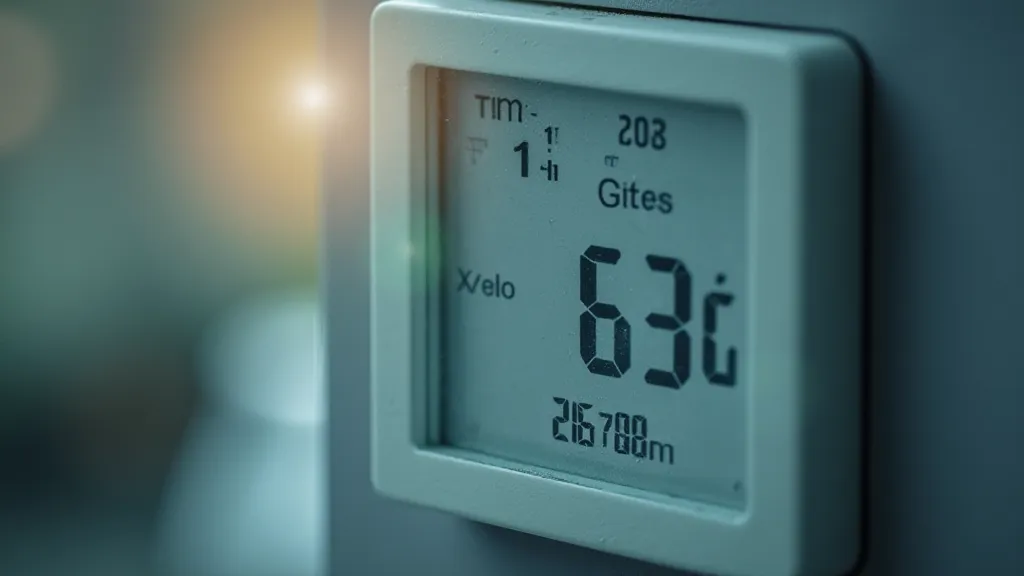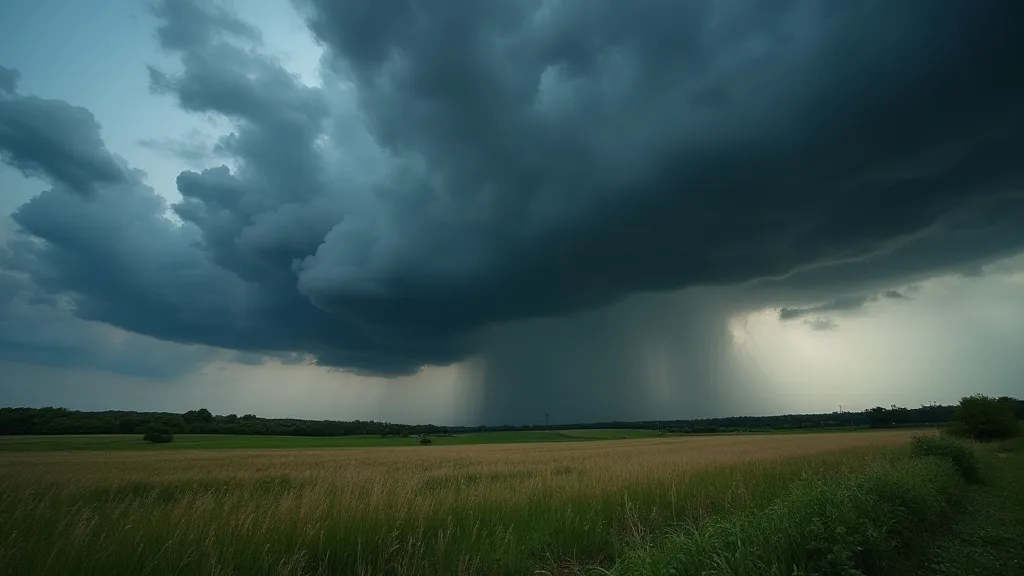Understanding Dew Point: A Critical Weather Factor
Building a DIY weather station is a rewarding project, allowing you to directly observe and understand weather patterns. While temperature and humidity are common measurements, understanding dew point can elevate your weather station readings from simple numbers to valuable insights. This article will explain what dew point is, why it’s important, and how it relates to your DIY weather station.
What is Dew Point?
Simply put, dew point is the temperature to which air must be cooled, at constant pressure and humidity, to reach saturation. At saturation, the air can’t hold any more water vapor, and water begins to condense – forming dew on surfaces, fog, or even heavier precipitation. Think of it as the 'actual coolness' of the air.

Why is Dew Point Important?
While relative humidity tells you how much moisture is in the air *compared* to what it *could* hold at that temperature, dew point tells you the absolute amount of moisture present. This is crucial for several reasons:
Comfort Levels: A high dew point feels muggy and uncomfortable, even if the air temperature isn't excessively high. This is because the air is already saturated with moisture. A lower dew point will generally feel more comfortable. Understanding the nuances of humidity is key to appreciating this – you can learn more about humidity explained and its impact on how we feel.
Predicting Precipitation: When the air temperature approaches the dew point, the likelihood of precipitation increases dramatically. A small drop in temperature can lead to fog, drizzle, or even heavier rain.
Severe Weather Potential: High dew points are often associated with thunderstorms and severe weather. The air is primed with moisture, providing fuel for storm development.
Frost Potential: When the ground temperature drops below the dew point, frost can form.
Dew Point vs. Relative Humidity
Let's clarify the difference. Relative humidity is a percentage that indicates how close the air is to saturation. A relative humidity of 100% means the air is saturated (dew point equals air temperature). A relative humidity of 20% means the air is fairly dry. However, a high relative humidity at a high temperature (say, 85% at 90°F) doesn't feel as oppressive as a high relative humidity at a lower temperature (say, 85% at 55°F). This is because the absolute amount of moisture (dew point) is what ultimately affects how we *feel* and what kind of weather we’re likely to experience. To truly grasp this, and to ensure your setup is optimized, you might find it helpful to review getting started with your DIY weather station and making sure you’re utilizing the correct equipment.
 Measuring Dew Point with Your Weather Station
Most basic DIY weather stations won't directly measure dew point. Instead, they measure temperature and relative humidity. Using these two values, you can calculate the dew point using online calculators or simple formulas (easily searchable online!). While not as precise as a direct measurement, it provides a valuable estimate. Choosing the best location for your station is paramount to accurate readings; research the best practices for choosing the right location for your DIY weather station to minimize obstructions and ensure reliable data.
For example, a common approximation formula is: Dew Point (in Fahrenheit) = (Temperature (in Fahrenheit) - Humidity Correction Factor * (Relative Humidity / 100)). The humidity correction factor varies slightly depending on the temperature range, so be sure to use a reliable source for the correct factor.
Delving Deeper: The Science Behind Dew Point
The concept of dew point is rooted in thermodynamics and the behavior of water vapor. As air warms, it can hold more moisture. This relationship isn’t linear; warmer air holds significantly more water than cooler air. When air is saturated, the partial pressure of water vapor equals the saturation vapor pressure – the maximum amount of water vapor the air can hold at a given temperature. Dew point is essentially the temperature at which that partial pressure is reached.
Understanding this relationship also helps explain why a low dew point in the morning, even if the temperature hasn't dropped significantly, can indicate drier air and a more comfortable start to the day. Conversely, a persistently high dew point throughout the day suggests that the air is holding a substantial amount of moisture, which can contribute to a feeling of humidity and discomfort.
Beyond the Numbers: Understanding the Implications
Don't just record the numbers; interpret them! Track how dew point changes over time, relate it to temperature trends, and observe how it correlates with weather events in your area. Understanding dew point will transform your DIY weather station from a collection of readings into a powerful tool for understanding your local climate. Consider tracking rainfall as well; building a simple building a simple rain gauge can be a great addition to your weather monitoring setup.
Measuring Dew Point with Your Weather Station
Most basic DIY weather stations won't directly measure dew point. Instead, they measure temperature and relative humidity. Using these two values, you can calculate the dew point using online calculators or simple formulas (easily searchable online!). While not as precise as a direct measurement, it provides a valuable estimate. Choosing the best location for your station is paramount to accurate readings; research the best practices for choosing the right location for your DIY weather station to minimize obstructions and ensure reliable data.
For example, a common approximation formula is: Dew Point (in Fahrenheit) = (Temperature (in Fahrenheit) - Humidity Correction Factor * (Relative Humidity / 100)). The humidity correction factor varies slightly depending on the temperature range, so be sure to use a reliable source for the correct factor.
Delving Deeper: The Science Behind Dew Point
The concept of dew point is rooted in thermodynamics and the behavior of water vapor. As air warms, it can hold more moisture. This relationship isn’t linear; warmer air holds significantly more water than cooler air. When air is saturated, the partial pressure of water vapor equals the saturation vapor pressure – the maximum amount of water vapor the air can hold at a given temperature. Dew point is essentially the temperature at which that partial pressure is reached.
Understanding this relationship also helps explain why a low dew point in the morning, even if the temperature hasn't dropped significantly, can indicate drier air and a more comfortable start to the day. Conversely, a persistently high dew point throughout the day suggests that the air is holding a substantial amount of moisture, which can contribute to a feeling of humidity and discomfort.
Beyond the Numbers: Understanding the Implications
Don't just record the numbers; interpret them! Track how dew point changes over time, relate it to temperature trends, and observe how it correlates with weather events in your area. Understanding dew point will transform your DIY weather station from a collection of readings into a powerful tool for understanding your local climate. Consider tracking rainfall as well; building a simple building a simple rain gauge can be a great addition to your weather monitoring setup.
 Dew Point and Storm Development: The interplay between temperature and dew point is critical in storm formation. As warm, moist air rises, it cools. If the air cools to the point where it reaches its dew point, condensation begins, releasing latent heat. This latent heat further warms the air, causing it to rise even higher, creating a positive feedback loop that can intensify thunderstorms. The higher the initial dew point, the more moisture is available to fuel these storms.
Dew Point and Frost/Ice Formation: When surface temperatures drop below the dew point, the water vapor in the air begins to condense directly into liquid water (dew) or, if the temperature is below freezing, into ice crystals (frost). This process is influenced by factors like wind speed, humidity, and surface characteristics.
Practical Applications and Monitoring Strategies
Beyond simply understanding the weather, tracking dew point can be beneficial for various practical applications. Farmers can use dew point data to assess irrigation needs and predict crop stress. Outdoor event planners can use it to make informed decisions about scheduling and preparedness. Even homeowners can use it to optimize energy consumption by adjusting thermostat settings based on predicted humidity levels.
Establishing a Baseline: Begin by recording dew point data over an extended period (at least a month) to establish a baseline for your location. This will help you identify seasonal trends and recognize unusual patterns.
Correlating with Other Weather Variables: Pay attention to how dew point changes in relation to temperature, wind speed, and precipitation. Look for correlations that might indicate specific weather phenomena in your area.
Utilizing Online Resources: There are numerous online resources available that provide detailed explanations of dew point and its relationship to other weather variables. Use these resources to deepen your understanding and refine your monitoring techniques.
By incorporating dew point into your DIY weather station project, you’re taking your meteorology knowledge to the next level! Happy monitoring!
Dew Point and Storm Development: The interplay between temperature and dew point is critical in storm formation. As warm, moist air rises, it cools. If the air cools to the point where it reaches its dew point, condensation begins, releasing latent heat. This latent heat further warms the air, causing it to rise even higher, creating a positive feedback loop that can intensify thunderstorms. The higher the initial dew point, the more moisture is available to fuel these storms.
Dew Point and Frost/Ice Formation: When surface temperatures drop below the dew point, the water vapor in the air begins to condense directly into liquid water (dew) or, if the temperature is below freezing, into ice crystals (frost). This process is influenced by factors like wind speed, humidity, and surface characteristics.
Practical Applications and Monitoring Strategies
Beyond simply understanding the weather, tracking dew point can be beneficial for various practical applications. Farmers can use dew point data to assess irrigation needs and predict crop stress. Outdoor event planners can use it to make informed decisions about scheduling and preparedness. Even homeowners can use it to optimize energy consumption by adjusting thermostat settings based on predicted humidity levels.
Establishing a Baseline: Begin by recording dew point data over an extended period (at least a month) to establish a baseline for your location. This will help you identify seasonal trends and recognize unusual patterns.
Correlating with Other Weather Variables: Pay attention to how dew point changes in relation to temperature, wind speed, and precipitation. Look for correlations that might indicate specific weather phenomena in your area.
Utilizing Online Resources: There are numerous online resources available that provide detailed explanations of dew point and its relationship to other weather variables. Use these resources to deepen your understanding and refine your monitoring techniques.
By incorporating dew point into your DIY weather station project, you’re taking your meteorology knowledge to the next level! Happy monitoring!








